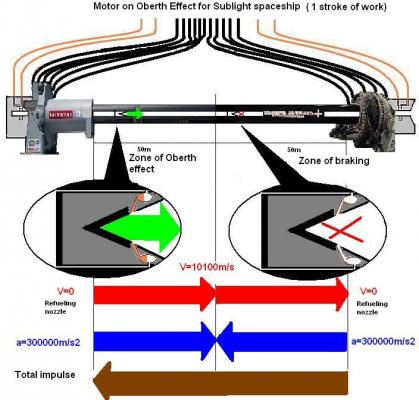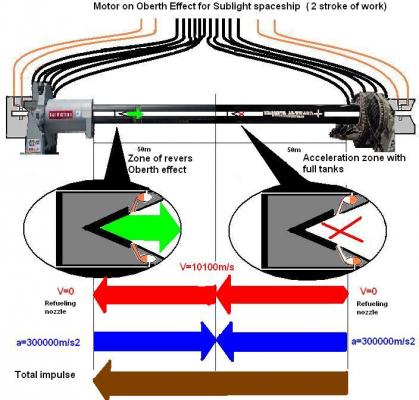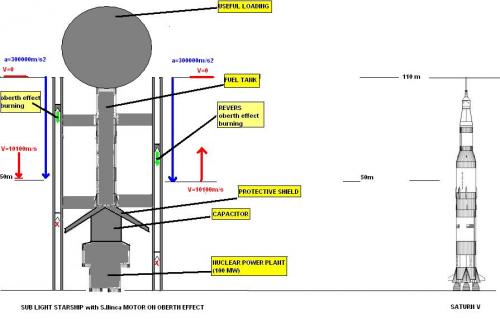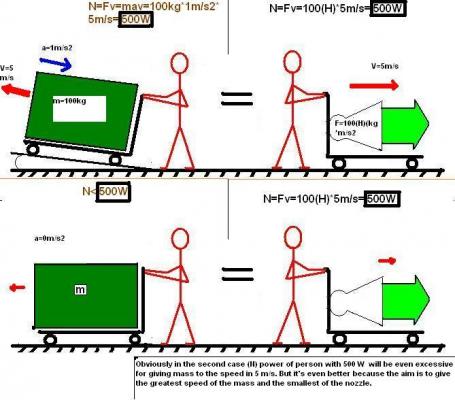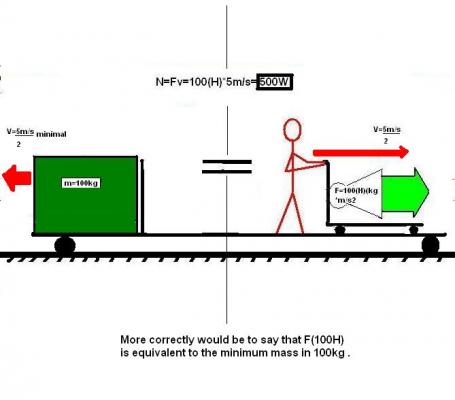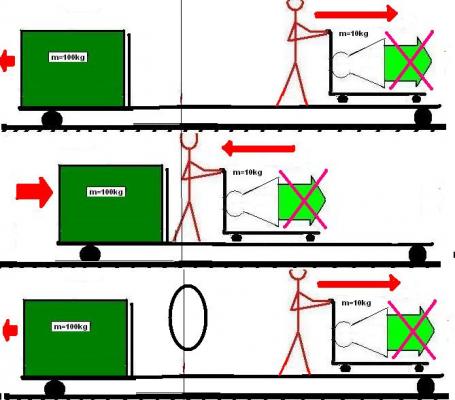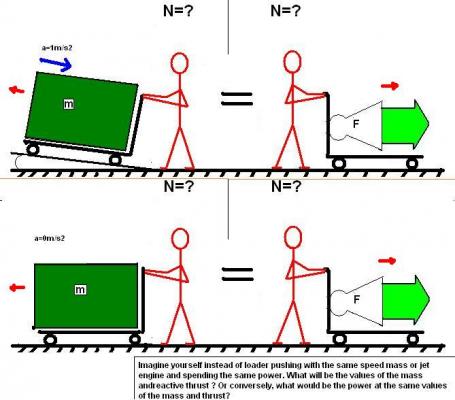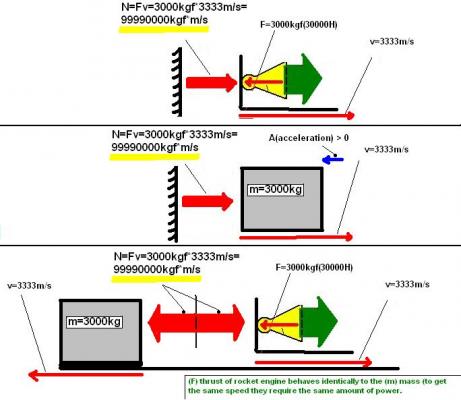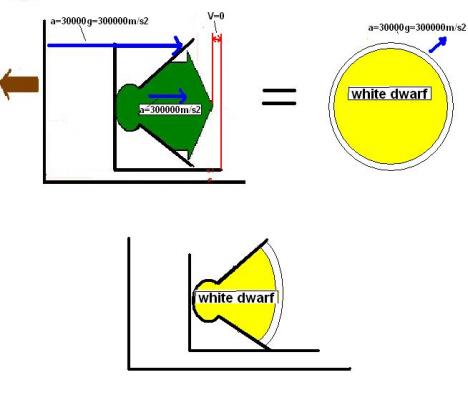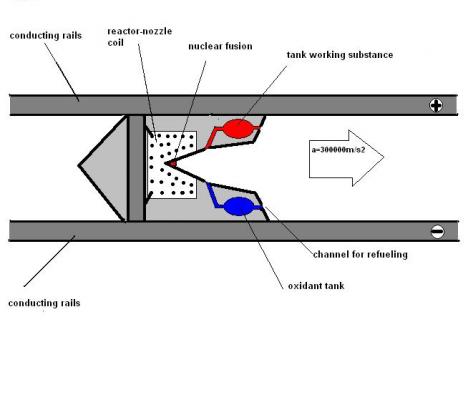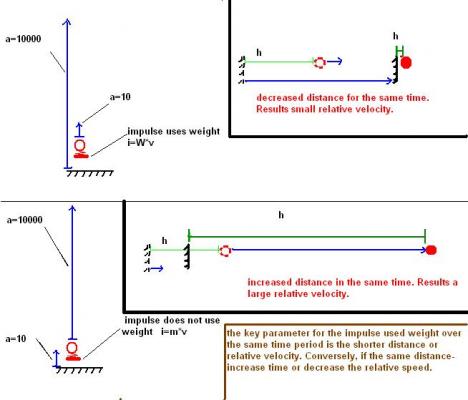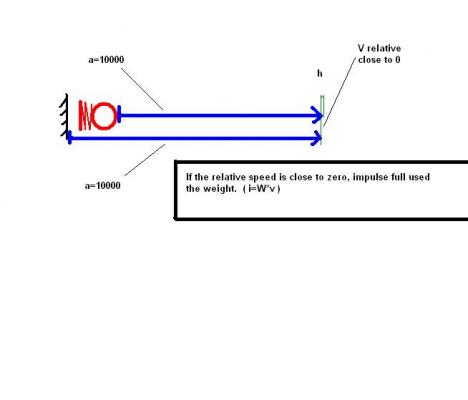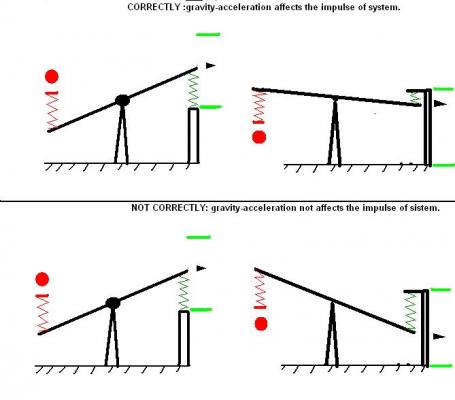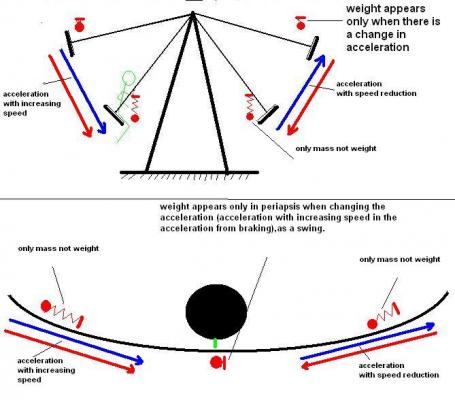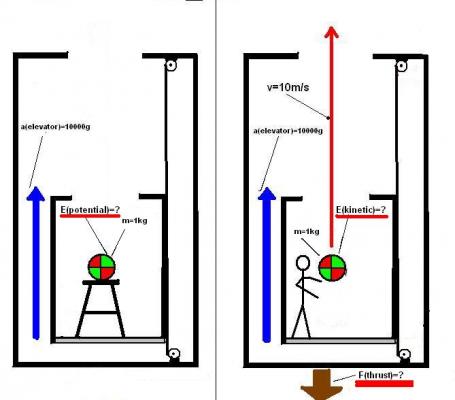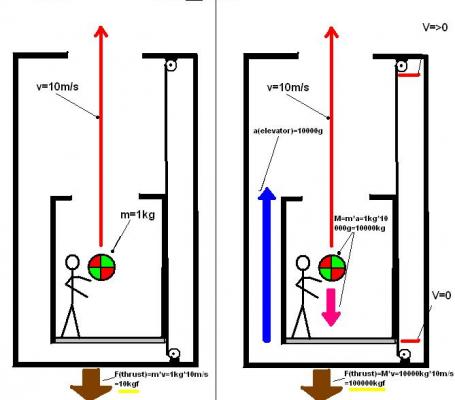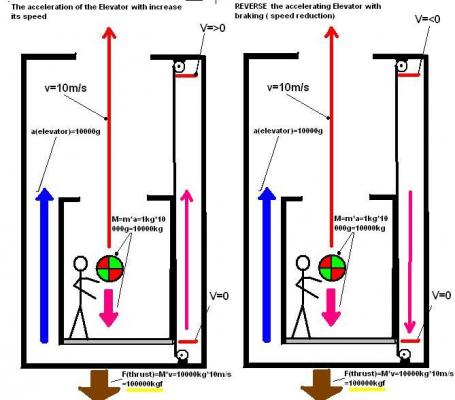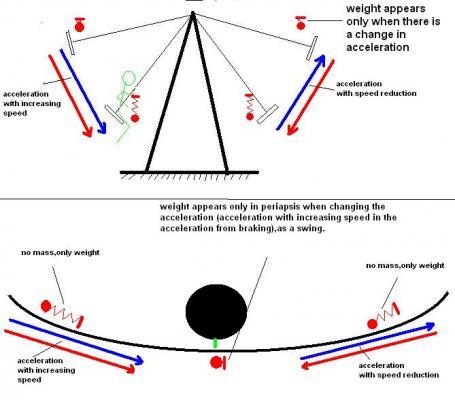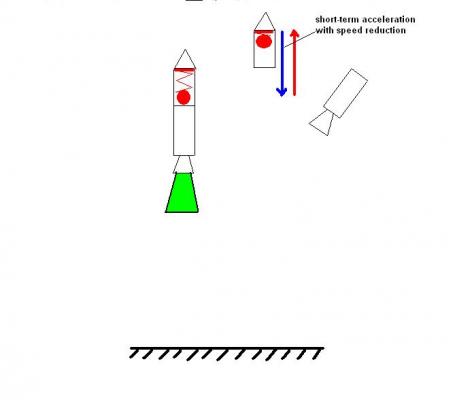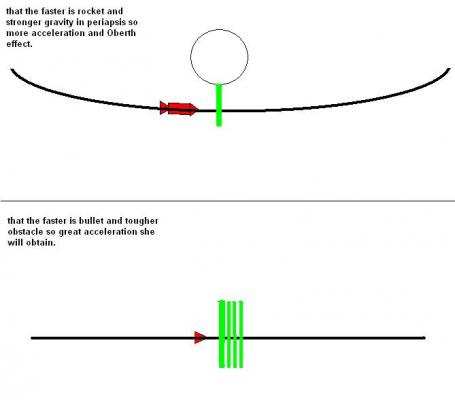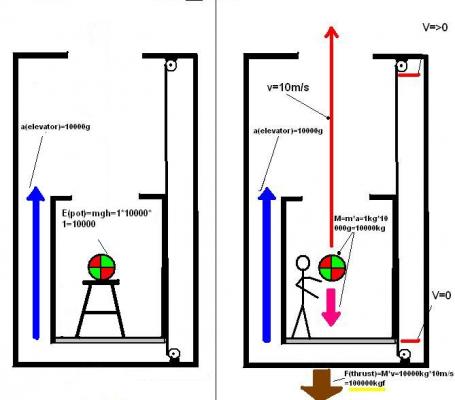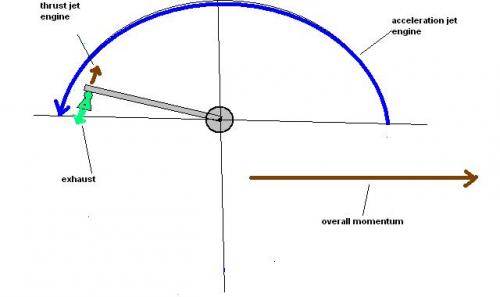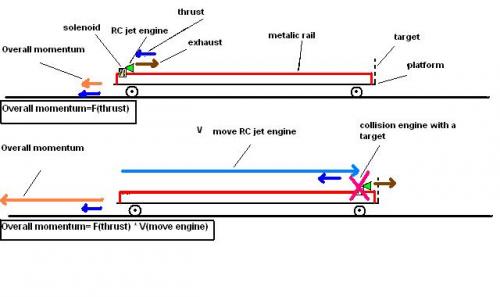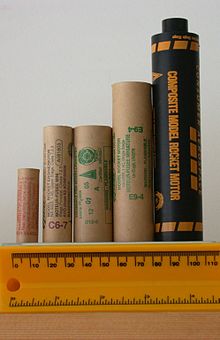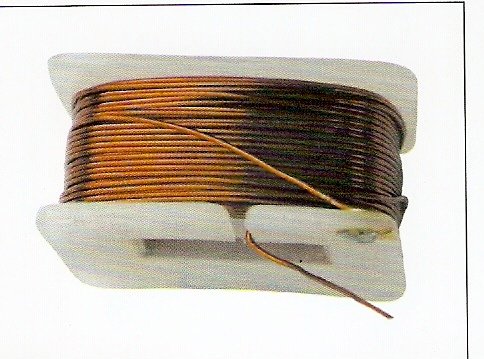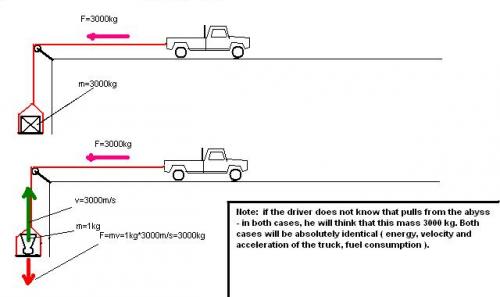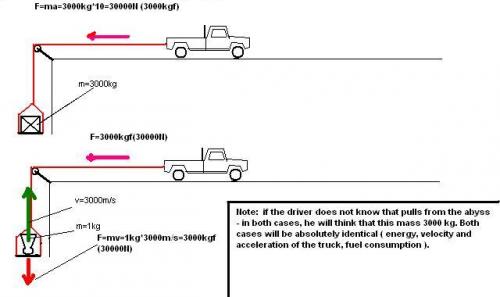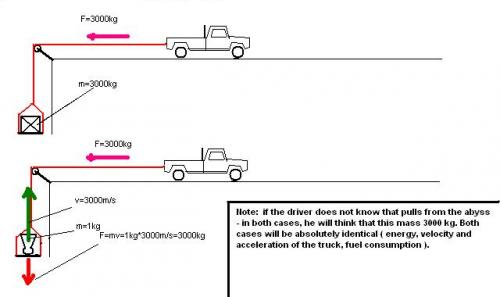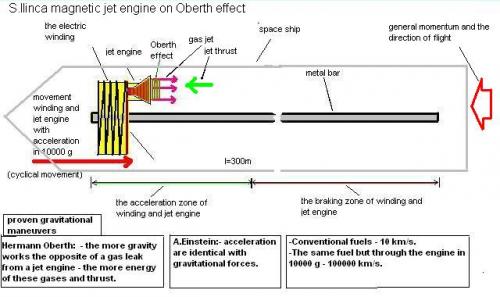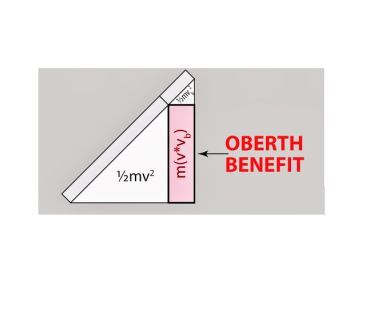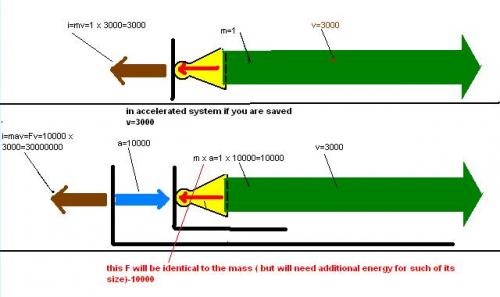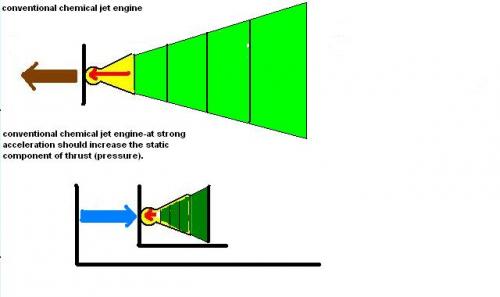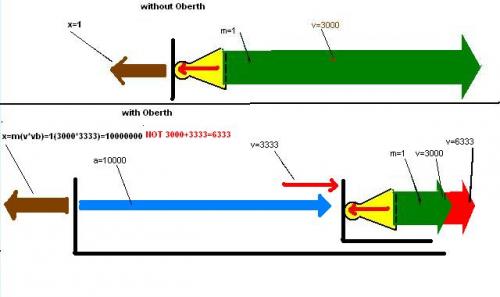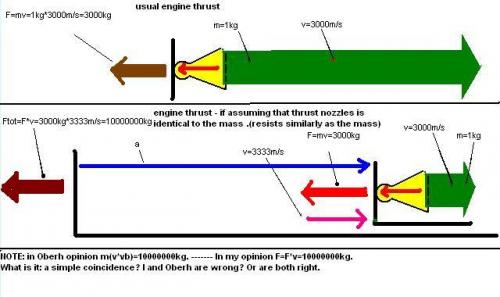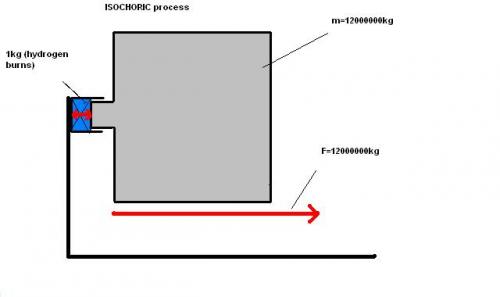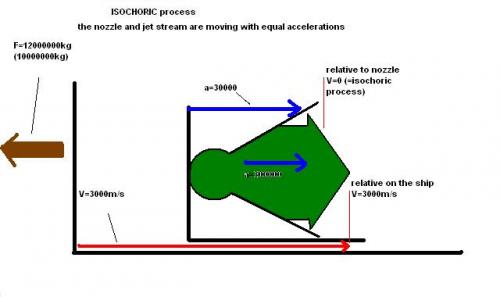-
Posts
22 -
Joined
-
Last visited
Content Type
Profiles
Forums
Events
Everything posted by Ilinca Sergiu
-
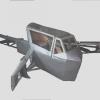
Wharp drive? S.Ilinca magnetic jet engine on Oberth effect
Ilinca Sergiu replied to Ilinca Sergiu's topic in Speculations
-

Wharp drive? S.Ilinca magnetic jet engine on Oberth effect
Ilinca Sergiu replied to Ilinca Sergiu's topic in Speculations
In my drawings the only thing which is moved with high acceleration ( including 300000 m/s2)- the nozzle of the jet engine(similar object to the nozzle). Where you saw people under acceleration 300000 m/s2 ?. Maybe it horror picture belongs to you personally? 150000 m/s2 acceleration limit for electrical circuit- these data are taken from the archives of what century? -

Wharp drive? S.Ilinca magnetic jet engine on Oberth effect
Ilinca Sergiu replied to Ilinca Sergiu's topic in Speculations
It would be very interesting to know: - that there is speculation? My physical model based on Oberth effect, a brilliant mathematical expression from HopDavid of this effect, or the Oberth effect itself ? -

How was the formula for kinetic energy found, and who found it?
Ilinca Sergiu replied to Ganesh Ujwal's topic in Physics
Who found the formula for kinetic energy? That's a good question. I think anyone who could not prove the law of conservation of power. Specify not the law of conservation of momentum,work and energy, but POWER . -

Wharp drive? S.Ilinca magnetic jet engine on Oberth effect
Ilinca Sergiu replied to Ilinca Sergiu's topic in Speculations
-

Wharp drive? S.Ilinca magnetic jet engine on Oberth effect
Ilinca Sergiu replied to Ilinca Sergiu's topic in Speculations
I'll try to explain in more detail. The man pushes the nozzle against the force of thrust. Physically, it is difficult for him to do. If he pushes the nozzle certain distance within a certain time, he spends some power. The sooner he does it, the more he gets tired (consumes more power).This power is transferred to his feet on the ground surface or to another mass (for example a moving platform). The same thing happens if someone pushes some mass which applies a very small acceleration. If this acceleration not exist ,that people will push any weight without power consumption. In this case, the equivalence between (F) and (m) will not be ,the nozzle will resist movement and the mass will not. I.e. this equivalence will shift giving speed only the mass but not the nozzle. But this is a perfect case because in reality, it is necessary to give first some acceleration to get the velocity (which occurs when nozzle is in acceleration I described at the beginning). If such an ideal case was that ,the system could unbalance even more than the equivalence of (F) and (m). -

Wharp drive? S.Ilinca magnetic jet engine on Oberth effect
Ilinca Sergiu replied to Ilinca Sergiu's topic in Speculations
Or easier. Imagine himself instead of the person in the picture and try to understand what he would push these carts (in what conditions it will be equally hard to push two carts?). -

Wharp drive? S.Ilinca magnetic jet engine on Oberth effect
Ilinca Sergiu replied to Ilinca Sergiu's topic in Speculations
Perhaps more relevant is if consider a similar system from a position of (N) power. (With position (N) and (A) starts and the explanation of Oberth effect). -

Wharp drive? S.Ilinca magnetic jet engine on Oberth effect
Ilinca Sergiu replied to Ilinca Sergiu's topic in Speculations
As will be burning fuel when nozzle acceleratingin in 30000g or 300000m/s2 (acceleration of normal railgun) ? If the fuel acceleration is approximately equal to the acceleration of nozzle-I think that will be a nuclear fusion reaction similar to the reaction of the white dwarf. I think if make this engine with the nuclear fusion reaction - will look something like this. If without nuclear fusion reaction-- will look too, something like this but without nozzle coil. -

Wharp drive? S.Ilinca magnetic jet engine on Oberth effect
Ilinca Sergiu replied to Ilinca Sergiu's topic in Speculations
No need to imparted by gravity here. -

Wharp drive? S.Ilinca magnetic jet engine on Oberth effect
Ilinca Sergiu replied to Ilinca Sergiu's topic in Speculations
Yes,but we are interested in short time but a certain interval of time. What's not essential to the acceleration-gravity 10m/s2 and particles with 400000m/s2 , can be significant for return values or equal - 400,000 and 400,000 m/s2 values. If the relative speed is close to zero - i=W*v -

Wharp drive? S.Ilinca magnetic jet engine on Oberth effect
Ilinca Sergiu replied to Ilinca Sergiu's topic in Speculations
You calculate the momentum for resting or uniformly moving system ( which is the same) of the box-ball. And saying that it is right for accelerating system box-ball. So you deny the influence of the "gravity-acceleration" inside of the box on the momentum. I can't agree with ,gravity affects the momentum. -

Wharp drive? S.Ilinca magnetic jet engine on Oberth effect
Ilinca Sergiu replied to Ilinca Sergiu's topic in Speculations
-

Wharp drive? S.Ilinca magnetic jet engine on Oberth effect
Ilinca Sergiu replied to Ilinca Sergiu's topic in Speculations
To understand my question needed to simplify these physical model to one very simple. Probably easier is impossible. Far away in space is the space station. At the station there is a Elevator without ceiling and the Elevator shaft is also open to space. On the floor of the Elevator has the ball weighing 1kg . In this Elevator is an astronaut he takes the ball and throws it up with the speed 10 m/s. The ball flies out of the station with the speed 10 m/s. The thrust obtained station from throwing the ball is Ftrast=m*v=10kgf. This Elevator is also the ability to move up and down with very large accelerations (10000g). The movement of the Elevator up and down with any accelerations and velocities has no impact on the total momentum of the station. He will always be ( 0 ). In the absence of Fthrust the station will make only oscillatory movements. If the Elevator will be acceleration in 10000g the ball on the floor will have a weight of 10,000kg or 10T. The astronaut will not be able to pick up the ball and throw up. And the astronaut will not withstand this acceleration. Now to throw the ball during acceleration of the lift we need Superman. I.e. this person should be 10,000 times stronger than ordinary cosmonaut. During acceleration Elevator Superman takes the ball with weight 10T and throws it up with the speed in 10 m/s. Now what may be the pressure on the floor of the Elevator from this shot and accordingly Fthrust ? Obviously it will be much greater than in the case without acceleration. And it is : the weight of the ball M=10000 kg, speed 10m/s,.. F thrust = M*v=100000kgf (I know weight not mass, but how differently? ). Do not forget that the total momentum of the system without Fthrust is ( 0 ) and these 100,000kgf will be increase the total momentum of the system? I think this is Oberth effect. But today it is used only reverse view .When the spacecraft passes periapsis gravity celestial body brake the spacecraft ( the bigger the ship's speed and gravity the more will be this brake and the more engine thrust). I think Oberth effect on the orbit can be compared with swings. Appears in periapsis when appears the weight of burning fuel. Oberth effect on the multi-stage rocket (change of acceleration). The passage periapsis of the rocket can be compared with the passage obstacles of bullet. The increase of kinetic energy in Obert effect does not arise from any relative velocities but from the increased potential energy of the fuel in nozzle. Oberth effect are the reflection of the law of energy conservation. -

Wharp drive? S.Ilinca magnetic jet engine on Oberth effect
Ilinca Sergiu replied to Ilinca Sergiu's topic in Speculations
Many perceive Oberth effect only with move the jet engine (rockets) in a circular orbit. So I suggest the model of my engine with circular motion of jet engine. Maybe it will be more clear what I mean. The only difference here is what I have instead of the gravity - acceleration (but according to Einstein they are identical). -

Wharp drive? S.Ilinca magnetic jet engine on Oberth effect
Ilinca Sergiu replied to Ilinca Sergiu's topic in Speculations
Maybe these calculations to leave more experienced readers ? I think F(thrust) = m(mass) can check with a simple experiment(with isochoric process more difficult). -

Wharp drive? S.Ilinca magnetic jet engine on Oberth effect
Ilinca Sergiu replied to Ilinca Sergiu's topic in Speculations
- 44 replies
-
-1
-

Wharp drive? S.Ilinca magnetic jet engine on Oberth effect
Ilinca Sergiu replied to Ilinca Sergiu's topic in Speculations
Yes maybe on this, many people express thrust of jet engine through (kgf),(Tf). 1kgf=9.8N -

Wharp drive? S.Ilinca magnetic jet engine on Oberth effect
Ilinca Sergiu replied to Ilinca Sergiu's topic in Speculations
What unit you prefer ? - Dyne Kilogram-force Kip (unit) Newton (unit) Planck force Pound (force) Poundal Sthène Ton-force ----at your discretion, include them in your calculations. My question is not about unit - about how can the force in some cases (my case) to behave as mass, what is the difference? Yes and do it intentionally.- 44 replies
-
-2
-

Wharp drive? S.Ilinca magnetic jet engine on Oberth effect
Ilinca Sergiu replied to Ilinca Sergiu's topic in Speculations
You are right. Yes Kinetic energy is not linear in speed- but in acceleration? But does it matter changing something in functions of rocket or not - if there is a real increase its speed ?( your explanation is not something abstract - real increase in the velocity of a rocket). Of course it would be better to explain my engine with work and power. Indeed (F) no (m) but offer such an experiment with a truck.- 44 replies
-
-1
-

Wharp drive? S.Ilinca magnetic jet engine on Oberth effect
Ilinca Sergiu replied to Ilinca Sergiu's topic in Speculations
Of course m(v*vb) does not have Oberth effect but this is the essence on which to base this effect. link : http://hopsblog-hop.blogspot.com/2013/10/what-about-mr-oberth.html -
What do you think- my engine on the Oberth effect will work or not? I think this is the main part explaining the Oberth effect: (citation)- "Take 1/2 of m (v + vb)v2, and you get 1/2 mv2 as well as 1/2 mvb2, the kinetic energy you'd expect from adding these two speeds. On top of that, you also get m(v * vb). The pink rectangle above is Oberth gravy. For example a kilogram going 10 meters/second has kinetic energy of 50 joules; a kilogram going 2 meters/second has kinetic energy of 2 joules. But a kilogram moving (10 + 2) meters/second doesn't have a kinetic energy of 52 joules, rather (50 + 2 + (10 * 2)) joules. Starting with a 10 meter/second speed and speeding up another 2 meters a second gives you a 20 joule Oberth benefit. So accelerating a mass already moving fast gives you more kinetic energy for your buck." I think in the case of accelerating, the energy of the jet stream will be: I propose to consider a model, in which supposedly thrust nozzle behaves like a mass.( resists the movement as some mass). In this case- in my opinion F=F*v=10000000kg, in Oberth opinion m=(v*vb)=10000000kg. What is it : a simple coincidence? I and Oberth are wrong? Or are both right,and we see the same process-which is outside incorrectly seen as (v+v). Wikipedia about the Oberth effect (why the motion of a rocket increases the kinetic energy of the propellant ): - e=av - E=Fv - E=Fs From the beginning I try to show that: -If acceleration increases the weight of the propellant in a nozzle : ( ma=F ) , F=mav, -If to consider (F) of thrust identical to (m) mass : (F=m) , F=Fv, -If not consider (F) of thrust identical to (m) mass : F=m(v*vb) ,that is identical to F=Fv, -if considered covered by a nozzle distance (s) instead of speed (v) : F=Fs, See no differences except the fact that I have the engine moves relative to the ship, Oberth relative to the selected point ( or celestial body ). and (F) instead (E) for clarity. Take a look from the other side . 1 kg of burning hydrogen has approximately 120 MJ energy. This is - work in 12000000 kgm. This energy can move 12000000 kg per 1 meter . In a vacuum, this will mean that a lot had the effect of F in 12000000 kg . So when almost isochorically process 1 kg of hydrogen can give a great power - 12000000 kg . ( for more isochorically process (F) increases proportionally) . Now look at the nozzle my motor which moves with acceleration equal to the acceleration of a jet . (Compare with my previous models).


